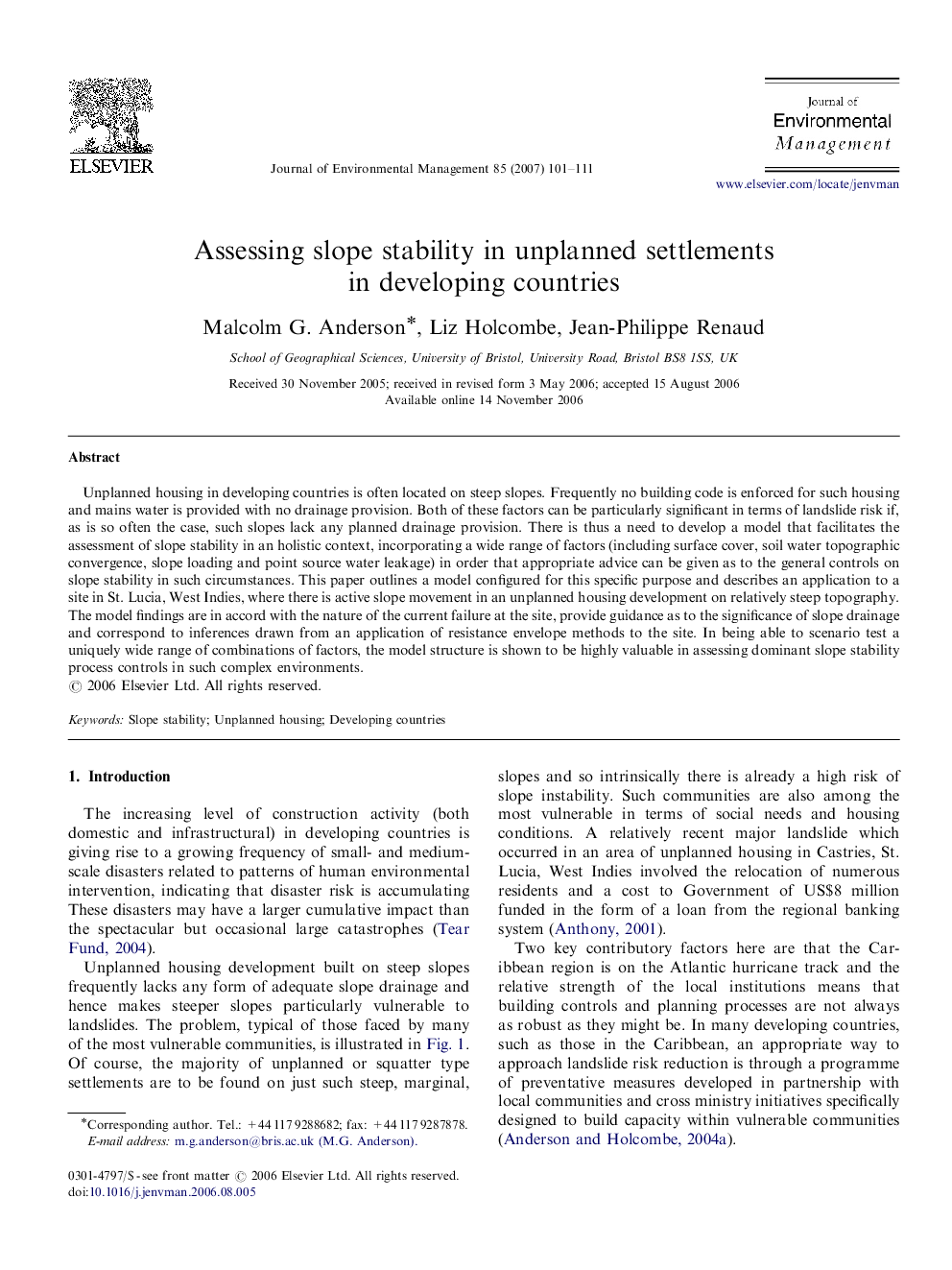| Article ID | Journal | Published Year | Pages | File Type |
|---|---|---|---|---|
| 1058583 | Journal of Environmental Management | 2007 | 11 Pages |
Unplanned housing in developing countries is often located on steep slopes. Frequently no building code is enforced for such housing and mains water is provided with no drainage provision. Both of these factors can be particularly significant in terms of landslide risk if, as is so often the case, such slopes lack any planned drainage provision. There is thus a need to develop a model that facilitates the assessment of slope stability in an holistic context, incorporating a wide range of factors (including surface cover, soil water topographic convergence, slope loading and point source water leakage) in order that appropriate advice can be given as to the general controls on slope stability in such circumstances. This paper outlines a model configured for this specific purpose and describes an application to a site in St. Lucia, West Indies, where there is active slope movement in an unplanned housing development on relatively steep topography. The model findings are in accord with the nature of the current failure at the site, provide guidance as to the significance of slope drainage and correspond to inferences drawn from an application of resistance envelope methods to the site. In being able to scenario test a uniquely wide range of combinations of factors, the model structure is shown to be highly valuable in assessing dominant slope stability process controls in such complex environments.
